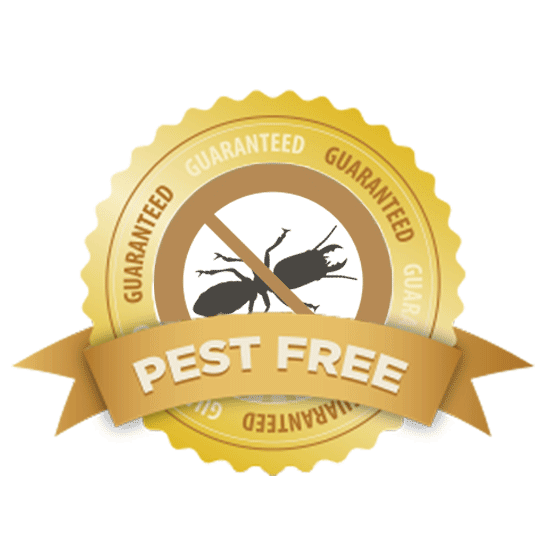Professional A1 Charlotte Bed Bug Exterminator - Top Quality Service Ensured
Professional A1 Charlotte Bed Bug Exterminator - Top Quality Service Ensured
Blog Article
Bed Insect Therapy Malfunction: Comparing Chemical Vs. Non-Chemical Solutions
In the realm of insect control, specifically when managing the persistent concern of bed bugs, the option in between chemical and non-chemical therapy options can be a critical one. Both methods offer distinctive advantages and disadvantages, affecting variables such as efficiency, safety and security considerations, and total price. By analyzing the nuanced information of each approach, a more clear understanding of which path to seek in addressing a bed insect invasion can be obtained.
Performance of Chemical Treatments
Chemical treatments for bed bug infestations have actually been extensively recognized for their potent and fast effectiveness in eliminating these parasites. When thinking about the performance of chemical therapies, it is essential to recognize that they can supply a quick and complete solution to a bed bug trouble.
Moreover, chemical treatments have the benefit of offering recurring results, indicating that they can remain to remove bed pests even after the preliminary application. This residual action is particularly beneficial in combating any type of possible re-infestations. Furthermore, the quick activity of chemical treatments can bring alleviation to people dealing with severe bed bug problems, allowing them to regain control of their space swiftly.
Safety Problems With Chemical Solutions
One important element that requires cautious factor to consider when using chemical services for bed insect therapy is making sure the safety and security of occupants and the atmosphere. While chemical treatments can be efficient in removing bed bugs, they may present threats if not dealt with correctly. Among the primary security problems with chemical solutions is the possible harm they can cause to human wellness. Exposure to certain chemicals utilized in bed insect therapies can bring about respiratory system concerns, skin irritability, or other negative responses, especially in people with pre-existing conditions or sensitivities. Additionally, incorrect application or dose of chemical pesticides can result in poisonous residues lingering in the cured location, posturing long-term wellness risks to occupants.
Moreover, the ecological impact of chemical services is another substantial consideration. Some chemicals made use of in bed pest treatments might be damaging to helpful pests, wild animals, and ecosystems if they seep into the soil or water systems. It is necessary to make use of chemical treatments sensibly, following safety and security standards, and thinking about less poisonous options to alleviate these threats and guarantee the reliable and risk-free administration of bed bug infestations.
Advantages of Non-Chemical Methods
Taking into consideration the prospective security issues and ecological effect linked with chemical services for bed pest treatment, discovering non-chemical strategies presents Check Out Your URL an encouraging choice with a number of distinct benefits. Non-chemical therapies are eco pleasant, as they do not contribute to air or water air pollution, making them a lasting option for pest control.
Furthermore, non-chemical remedies can be reliable in targeting bed insects, consisting of hard-to-reach locations where chemical informative post therapies might not pass through - A1 bed bug treatment in charlotte. Methods such as heat treatment, vacuuming, heavy steam cleaning, and mattress coverings offer extensive removal without the usage of harmful chemicals.
Limitations of Non-Chemical Treatments

Additionally, non-chemical treatments usually call for several applications to achieve successful obliteration. This can be taxing and may not always guarantee complete elimination of all bed pests and their eggs, particularly in covert or hard-to-reach places.
In addition, the success of non-chemical therapies greatly counts on correct implementation and thoroughness, which can be testing for people without professional competence. Inadequate application of non-chemical approaches might lead to incomplete eradication, causing persistent invasions and the requirement for additional therapies.
Consequently, while non-chemical treatments have their benefits, it is necessary to acknowledge these limitations and consider them when establishing one of the most reliable technique for handling bed bug invasions.
Expense Comparison: Chemical Vs. Non-Chemical Options
Given the constraints connected with non-chemical therapies, an important facet to review in the context of bed insect monitoring is the cost contrast between chemical and non-chemical options. In contrast, non-chemical treatments like heat treatment or heavy steam can be more expensive, with costs varying this contact form from $1,000 to $6,000 for an entire home. While the preliminary price of chemical therapies may appear reduced, multiple treatments may be required to completely remove the infestation, possibly raising the general cost.
Conclusion

Taking into consideration the potential safety and security problems and environmental influence linked with chemical services for bed insect therapy, exploring non-chemical approaches offers a promising alternative with several distinctive advantages.Given the limitations associated with non-chemical treatments, an essential facet to evaluate in the context of bed bug management is the price contrast between chemical and non-chemical options. In contrast, non-chemical therapies like warm therapy or vapor can be much more pricey, with costs ranging from $1,000 to $6,000 for a whole home. While the first expense of chemical therapies may appear lower, several treatments might be required to fully eliminate the problem, possibly boosting the overall cost.In conclusion, when comparing chemical and non-chemical bed pest treatment alternatives, it is vital to consider performance, security, advantages, limitations, and expense.
Report this page